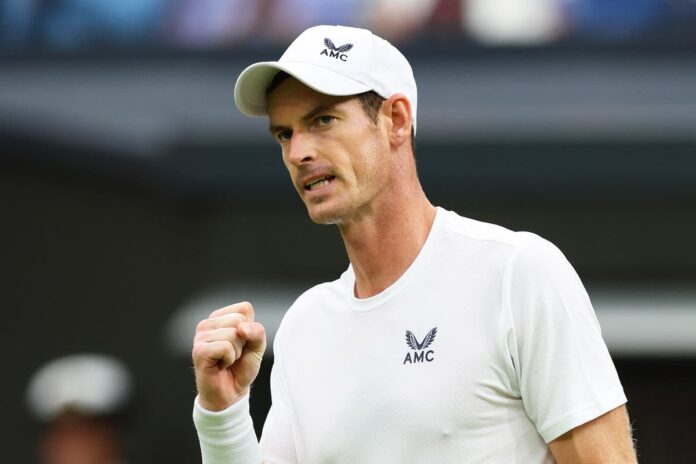Watching Andy Murray tearing around under the Centre Court roof late on Thursday night was to be transported back in time. Exactly 10 years on from the day he first lifted the Wimbledon title, in the process breaking a British duck that stretched back to the days when chaps wore long trousers to play, everything was apparently still in full working order. The pace, the power, the precision were somehow intact despite the fact the man’s frame is now largely constructed of plastic. More to the point the square mouthed gurn of triumph, the fist pumping conducting of the crowd, the echoing howl of ‘c’mon’: if was if all those injuries, all those operations, all those emotional farewell speeches had never happened. And how we need Murray back in our lives, roaring. For sure, Liam Broady was doing his bit for national wellbeing by disposing of the number four seed. True Katie Boulter has looked calm and resolute on her progress to the third round. But nobody gets us Brits excited like Murray. Nobody else puts a pause on the start of the 10 o’clock news. Nobody turns tennis into a collective psycho drama in quite the way he does. What makes it all the more remarkable watching him thrash and smash, lob and rally is how damaged he has been. He has had a new hip installed, had his spine realigned, for a significant period of time the assumption was the poor chap would be unable to walk for more than a few yards, never mind play at full throttle. There was a hint of how he had recovered from such medical set back in those two five hour marathons he delivered in the Australian Open. But that was in Melbourne. What we needed is for the world’s greatest Scotsman to do it on the lawns of south west London. That is when we notice tennis, that is the brief interlude when it becomes central to our lives. And before this year’s tournament, the knowledge he was back in the singles draw, firing on all cylinders, gave a competition desperately in need of star quality a little zest. Sure, no serious observer thought he could last the distance. But so what, if he could gift us the opportunity for a couple of fleeting moments of Murraymania then that would be enough. Because this is what he has always done: played with our emotions. It is never easy with Andy. He doesn’t do walkovers. He doesn’t do brushing aside opponents. It is always a battle, always a scrap, always a rollercoaster. He invariably supplies a full narrative arc that swerves from hope to despondency back to hope again, before finding triumph. Nobody does it like Murray. And here’s the thing: off court he is exactly what we would hope for in our heroes. Along with Rafael Nadal, nobody is spoken about as warmly by the staff at Wimbledon. He is always there with a kind word, a selfie with the security guards, a grin and a chivvy. In his public statements he is inevitably on the right side of the argument. And when he won a tournament without realising that his four kids were watching and immediately started blubbing, the nation’s heart melted once more. That is why we need him in our lives: what he does matters. He is a hero for our times. And what has made his return all the more delightful is the fact of where he has come from. He appeared to be damaged beyond recall. But this survivor of terrible childhood trauma is the very embodiment of the Dunblane spirit, of the refusal to be confounded despite the scale of the obstacle. We thought it was all over. But we should have known: with Andy Murray it never is.


